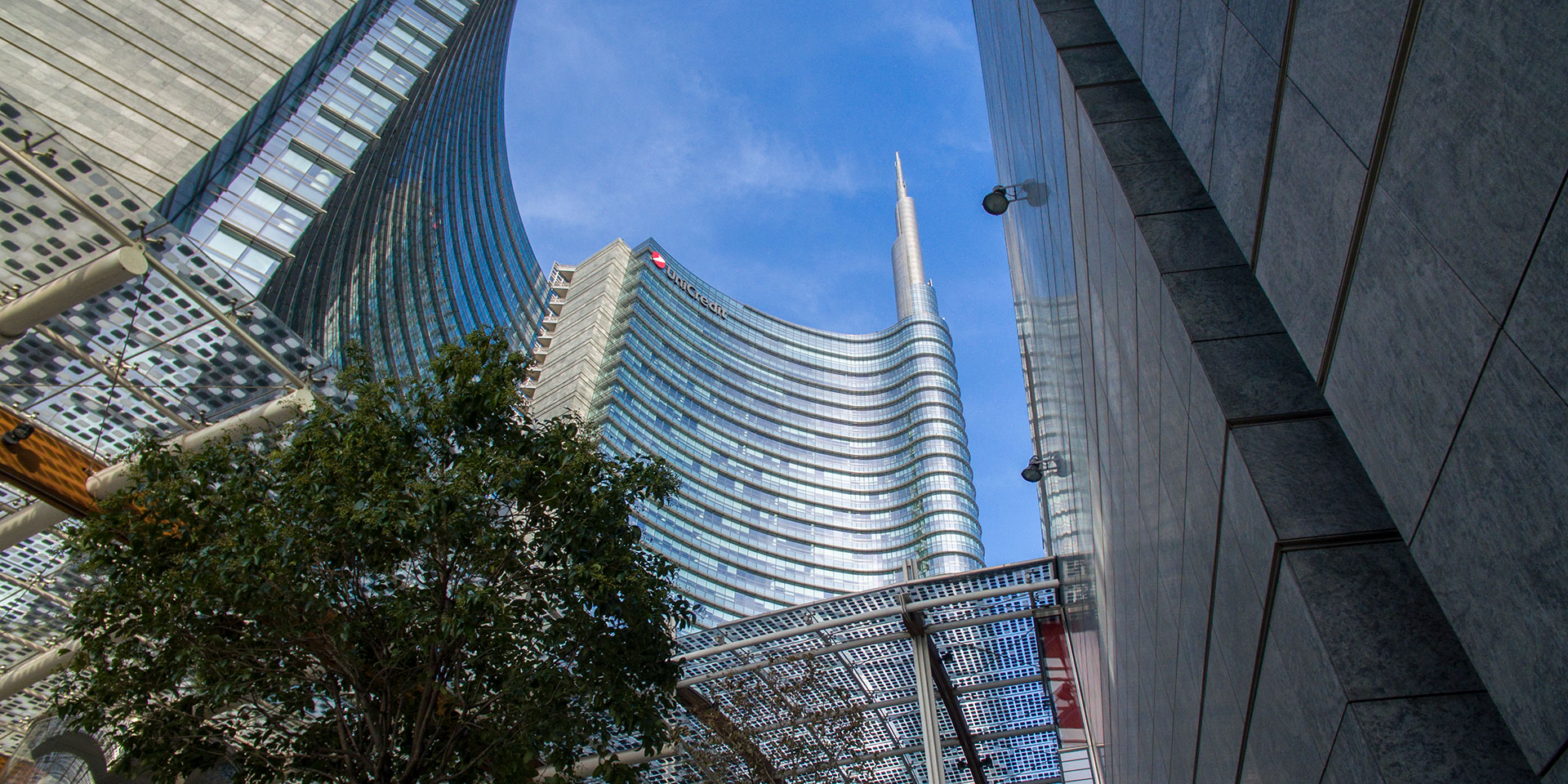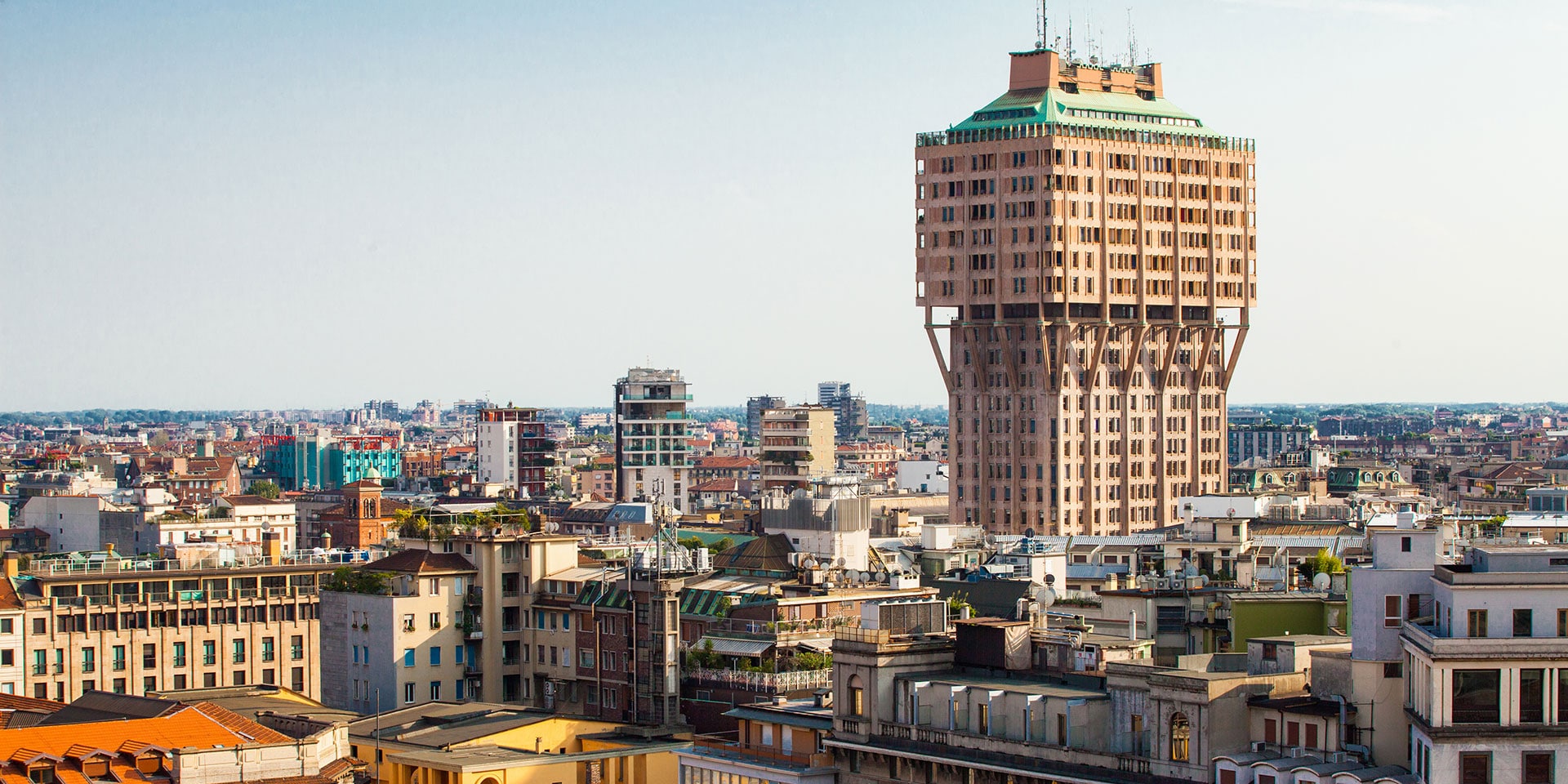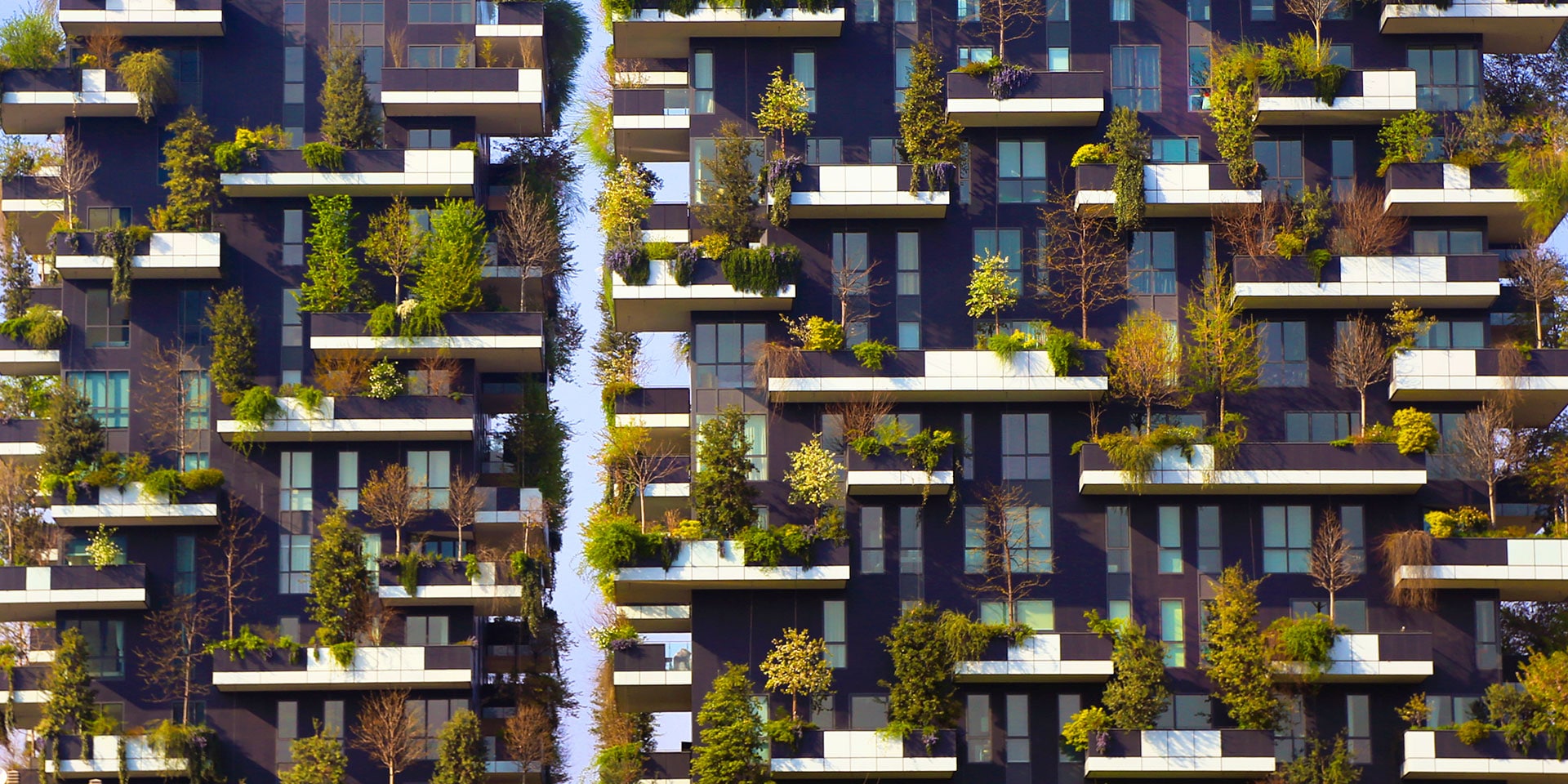For many years, the urban landscape in Milan was dominated by two major structures: the Duomo and Sforza Castle. While these two buildings are still major icons, the rest of the city has risen to the occasion with a number of new skyscrapers and architectural gems reshaping the skyline.
Here are six of Milan’s most architecturally interesting buildings from the last century. As always, check for travel guidelines and closures before planning your trip.
Bosco Verticale
Also part of the massive Porta Nuova project, these two dreamlike “vertical forests” — actually residential buildings — sit on the edge of Isola. The structures, which were designed by Stefano Boeri, are home to 900 trees, as well as a wide variety of flowering plants and shrubs; the result is an ever-changing facade that is sure to mesmerize (look no further than the crowds on the street with their faces turned skyward, neck cricks be darned).
After snapping the requisite photos, find your way the nearby Excelsior Hotel Gallia, a Luxury Collection Hotel, and enjoy rooftop drinks or dinner with a view at Terrazza Gallia Bar & Restaurant.
UniCredit Tower

A slender modernist skyscraper built by César Pelli in 2011, the UniCredit Tower spirals upward into the sky, not unlike the spires that top the Duomo, Milan’s famous Gothic-style cathedral. The tallest building in Italy, UniCredit Tower has not only redefined Milan’s skyline, which for many years was capped, height-wise, by the practice of not building anything taller than the golden Madonnina statue atop the Duomo, but also anchors the Porta Nuova area.
This massive construction project has transformed a formerly gritty corner of the city, which used to be dotted with abandoned lots and foundations of demolished buildings, into a futuristic commercial and residential hub, complete with sprawling gardens.
Torre Velasca

Finished in 1958, the Velasca Tower (Torre Velasca) was an all-Italian project, built by the architectural partnership BBPR, with architect Ernesto Nathan Rogers taking the lead. The protruding, mushroom-shaped upper half may look out of place among the newer skyscrapers, which are all straight lines and severity, but this mixed-use building was an influential piece of post-war architecture.
Rogers’ team crafted a skyscraper that eschewed international influences and instead reflected the city’s urban environment and unique aesthetic: The remarkable tower, made of crushed terra cotta, grit and marble, was designed to encourage the use of the surrounding piazza, and many of its design elements reference the Sforza Castle and the Gothic-style Duomo, two other soaring structures that for many years were the centerpieces of Milan’s skyline.
Fondazione Prada
One of Milan’s most prominent contemporary art spaces, Fondazione Prada occupies a former distillery on the southern edge of the city that was conceived by Rem Koolhaas and OMA for the Milanese fashion house.
While the entire complex is itself a work of art, the Torre (Tower) that opened in 2018 stands out for its distinctive design. Housing works from Prada’s permanent collection, the white geometric structure pierces the sky in an area with very few tall buildings, and as a result, offers incredible vistas of the city from the various galleries.
CityLife

A trio of starchitects — Daniel Libeskind, Zaha Hadid, and Arata Isozaki — are behind the Tre Torri (Three Towers), the crowning jewels of the CityLife mixed-use development.
Hadid’s Generali Tower is a tall and twisting steel-and-glass number, while Isozaki’s slender Allianz Tower ripples upward to the heavens. The curved Libeskind Tower was completed in 2020, transforming the area into a paradise for architecture lovers.
Villa Necchi Campiglio
While not one of Milan’s most conspicuous buildings, this rationalist-style mansion will be familiar to many cinephiles: Luca Guadagnino’s 2009 film “I Am Love” was mostly set here.
Built by the famous Italian architect Piero Portaluppi for a prominent industrialist family in the 1930s, the villa is hidden behind a row of hedges in central Milan, occupying a luxurious half-acre plot of land. The fabulous private garden and the interior, with its art deco touches, exemplify restrained grandeur.




